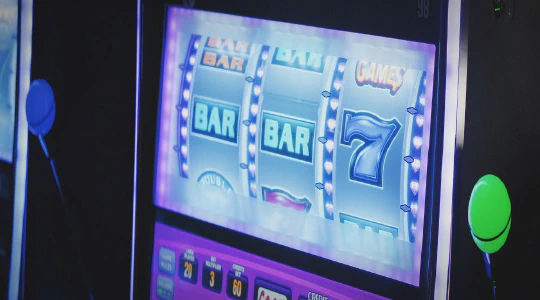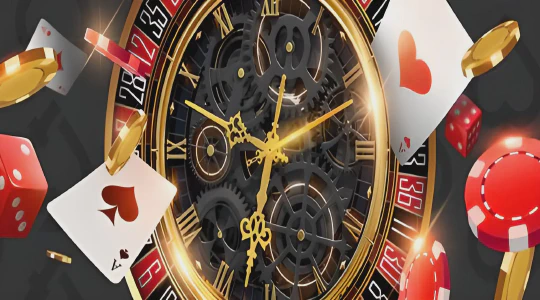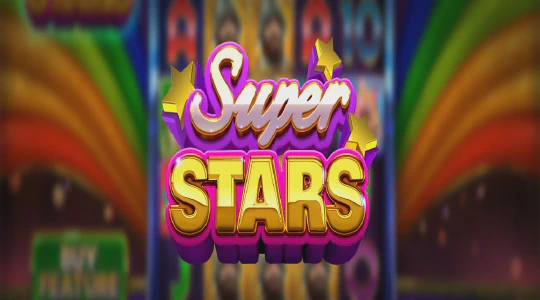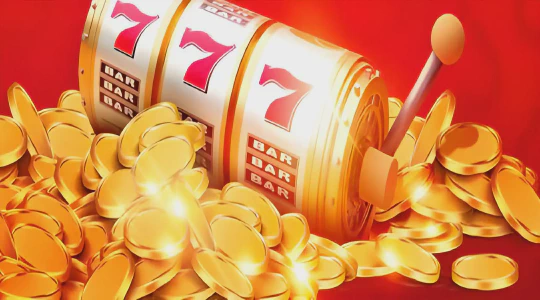Mastering the Art of Dealing Cards in Poker: A Comprehensive Guide
If you're an avid poker player or just someone who wants to learn how to deal cards like a pro, you've come to the right place! Properly dealing cards is an essential skill to have in any poker game, and if you do it right, you'll not only impress your friends but also ensure a fair game for all players.
Whether you're playing Texas Hold'em, Omaha, or Seven Card Stud, the fundamentals of dealing cards remain the same. From shuffling to dealing the cards, there are important rules to follow that will make you appear competent and slick. In this article, we'll go over the basics of how to deal poker cards, covering everything from card handling to table etiquette.
So, whether you're getting ready to host a poker night with your friends or just want to show off your card-handling skills, read on for our expert tips on how to deal poker hands like a pro!
The Basics of Dealing Cards
Shuffling Cards
Before starting a game of poker, it is essential to shuffle the deck of cards. There are a variety of ways to shuffle the cards, such as the overhand shuffle or the riffle shuffle, but the key is to ensure that the cards are well-mixed to avoid any cheating or bias.Tip: If you are new to shuffling cards, try practicing with a smaller deck of cards until you master the technique.
Dealing the Cards
Once the deck has been shuffled, the dealer should distribute the cards to each player. The cards are dealt one at a time, starting with the player to the left of the dealer and moving clockwise around the table. In most poker games, each player should receive two cards, and these cards should remain face down until all players have received their cards.Tip: Dealers should be careful not to reveal the cards they are dealing or any cards that have been dealt to other players, as this can compromise the integrity of the game Mostbet.
Burning and Flopping Cards
In some poker games, such as Texas Hold'em, the dealer must also "burn" and "flop" cards. Burning involves discarding the top card of the deck before dealing, while flopping involves revealing the first three cards on the table after the initial betting round has taken place.Tip: Make sure to understand the specific rules of the poker game being played, as this can vary depending on the type of game.
Practice Makes Perfect
Dealing cards in poker takes practice, but with time and experience, you can become an expert at shuffling, dealing, and handling the cards in a professional manner. Remember to always remain attentive and focused on the game, as this can make all the difference in your success as a poker dealer.Tip: Do not get discouraged if you make mistakes at first. Keep practicing, and you will master the art of dealing cards in no time!
Learn How to Shuffle Cards Like a Pro
Shuffling the cards is an essential skill for any poker player. A good shuffle ensures that the cards are mixed up and randomized, making it difficult for anyone to cheat or predict what cards will be dealt next. Here are a few ways you can shuffle the deck:
- Riffle Shuffle: This shuffling technique involves dividing the deck into two halves and then interweaving the cards with your thumbs to create a shuffle. Repeat this a few times to ensure the deck is mixed.
- Overhand Shuffle: This shuffle involves taking small packets of cards from the top of the deck and transferring them to the bottom until the entire deck is mixed.
- Table Riffle Shuffle: This is a more complex shuffle that involves first creating a stable bridge (where the cards are bent upwards) and then riffle shuffling the cards into the bridge.
Remember that it's essential to shuffle the deck thoroughly and avoid any pattern or predictability to help maintain the integrity of the game. So go ahead, practice these techniques and impress your friends with your shuffle skills!
Different Types of Shuffles
Shuffling is an essential part of playing poker. It helps to ensure that the cards are well mixed and distributed randomly, giving all players an equal chance of getting a good hand.
There are several types of shuffles that can be used, including the overhand shuffle, riffle shuffle, and Hindu shuffle. The overhand shuffle is the simplest and most commonly used shuffle. It involves taking small packets of cards from the top of the deck and placing them on the bottom, repeating until the deck is well shuffled. The riffle shuffle involves splitting the deck in half and riffling the two halves together, allowing the cards to interleave in a more random way. The Hindu shuffle involves holding the deck in one hand with the cards facing down and using the other hand to pull small packets of cards off the top and placing them onto the table, repeating until the deck is shuffled.
No matter which shuffle is used, it's important to ensure that the cards are shuffled thoroughly to prevent any patterns from forming. A well-shuffled deck will help to ensure a fair game and prevent any accusations of cheating.
Preparing to Deal Cards
Shuffle the Deck
Before dealing the cards, it is important to shuffle the deck thoroughly to ensure that the cards are randomized, making the game fair for all players. Use a standard 52-card deck and shuffle multiple times to make sure all the cards are well mixed.
You can shuffle the cards by spreading them out on the table and mixing them up with your hands or by using a shuffling machine. If using a machine, make sure to cut the deck in half and shuffle each half separately to avoid any clumping.
Deal the Cards
Once the deck has been shuffled, it's time to deal the cards. Depending on the type of poker being played, the number of cards each player is dealt and the order of dealing may vary. Most commonly, players are dealt two cards facedown in Texas Hold'em.
The dealer should always begin dealing cards to their left and continue clockwise around the table. Make sure to deal the cards in a way that is visible to all players, usually by sliding the cards face down to each player.
Maintain the Proper Sequence
During the dealing process, it is important to maintain the proper order to prevent any confusion or misunderstandings. Once the dealer has dealt all the cards, the betting round begins.
It's important to be aware of who the first player to act is and who has the last action, as this can change with each hand. The dealer should also announce the betting limits and any special rules that apply to the game before the first round of betting.
How to Deal Cards in Texas Hold'em
The Basics
To begin dealing cards in Texas Hold'em, the dealer will shuffle a 52-card deck and deal two cards, called "hole cards," face down to each player at the table.
The game starts with the player to the left of the dealer, who can either fold, call, or raise based on the strength of their hand. The dealer then deals three community cards, called the "flop," face up in the center of the table, followed by a round of betting.
The Turn and River
After the flop betting round is complete, the dealer deals the fourth community card, called the "turn," face up in the center of the table, followed by another round of betting.
Finally, the dealer deals the fifth and final community card, called the "river," face up in the center of the table, followed by the final round of betting.
The Showdown
Once all betting is complete, any remaining players reveal their hole cards to determine the winner. The player with the best five-card combination of their two hole cards and the five community cards wins the pot.
Remember, when dealing cards in Texas Hold'em, always keep the deck and the community cards in plain sight of all players, and follow the betting rules and etiquette of the game to ensure a fair and enjoyable experience for all players.
How to Deal Cards in Omaha Hold'em
Introduction
Omaha Hold'em is a popular poker game that is similar to Texas Hold'em but with some key differences, such as each player receiving four hole cards instead of two. In order to properly play the game, it is important to know how to deal the cards.Step 1: Shuffle the deck thoroughly.
Before dealing the cards, make sure to shuffle the deck thoroughly to ensure that the cards are random and not in any particular order.Step 2: Distribute the hole cards.
Starting with the player to the left of the dealer, deal four cards face down to each player, one at a time, in a clockwise direction. These four cards are the player's hole cards and they are only visible to that player.Step 3: Deal the flop.
Once all of the hole cards have been dealt, deal the flop. This is done by dealing three community cards face up in the center of the table.Step 4: Deal the turn.
After the flop, deal another community card face up in the center of the table. This is called the turn.Step 5: Deal the river.
Finally, deal the last community card face up in the center of the table. This is called the river.Step 6: Determine the winning hand.
At this point, all of the community cards are on the table and each player has their four hole cards. The player with the best five-card hand using two of their hole cards and three of the community cards wins the pot.By following these steps and properly dealing the cards in Omaha Hold'em, you can enjoy the game and impress your friends with your knowledge and skills.
How to Deal Cards in Seven-Card Stud
Step 1: Shuffle the Deck
Take a standard deck of 52 cards and shuffle them thoroughly. In Seven-Card Stud, there are no community cards like in Texas Hold'em, so the cards dealt to each player are unique to them. Ensuring a fair shuffle is vital to the game's integrity and to keeping it interesting.Step 2: Deal the Cards
Start dealing the cards clockwise to each player at the table. In Seven-Card Stud, each player is dealt two face-down cards and one face-up card. The player with the lowest face-up card will start the betting action.Step 3: Continue the Deal
Continue dealing the cards in the same manner until each player has received seven cards total. The first two cards will be dealt face-down, followed by four face-up cards, and then the final card is dealt face-down.Step 4: Determine the Winner
After all seven cards have been dealt, the remaining players will reveal their hands, and the highest-ranking hand wins. In Seven-Card Stud, the hand rankings follow the traditional poker hand rankings. The player with the best hand takes the pot.Step 5: Repeat the Process
Once the hand is complete, the dealer will move to the next player clockwise. The process will repeat from step one, and the next hand will begin. Keep playing and dealing until someone wins big, or your friends have had enough poker for one night.Learn How to Deal Cards in Razz
Introduction:
Razz is a popular variation of poker that uses seven cards to form the best five-card hand. In Razz, the lowest hand wins. To properly deal Razz, you need to follow a few simple steps.Step 1: Shuffle the deck thoroughly and cut the deck to determine the first dealer. The player who cuts the highest card becomes the dealer.
Step 2: Deal two cards face down to each player, starting from the player to the left of the dealer. These are called "hole cards."
Step 3: Deal one card face up to each player, starting from the player to the left of the dealer. This is called the "bring-in" card, and the player with the highest card is required to make a forced bet.
Step 4: Deal three more cards face up to each player, one at a time, with a round of betting after each card is dealt.
Step 5: Deal one final card face down to each player, followed by a final round of betting.
Step 6: Showdown: The player with the lowest five-card hand wins the pot. It's important to remember that straights and flushes don't count against your hand, and Aces are always low.
Conclusion: Now that you know how to properly deal Razz, you can impress your friends with your new skills. Just remember to shuffle the deck thoroughly and follow the steps precisely for a fair and fun game of Razz poker!
How to Deal Cards in Five-Card Draw
Step 1: Shuffle the Cards
Before dealing, shuffle the deck thoroughly to ensure that the cards are random and that no player has an advantage. Make sure to use a standard 52-card deck for this game.
Step 2: Cut the Deck
Once the deck is shuffled, ask one of the players to cut the deck. This prevents anyone from cheating and ensures a fair game.
Step 3: Deal the Cards
Starting with the player to your left, deal one card face down to each player, then one card face up. Repeat this process until each player has five cards, with the last card being dealt face down.
Step 4: Betting Round Begins
Once all players have their five cards, the betting round begins. The player to the dealer's left starts the betting, with each player having the option to call, raise, or fold. The betting round continues until all players have either folded or placed equal bets.
Step 5: Discard and Draw
After the first betting round, each player can choose to discard any number of their five cards and replace them with new ones from the deck. The dealer then deals new cards face down to each player who discarded, with the first discard being dealt to the player who placed the first bet.
Step 6: Second Betting Round Begins
Another betting round takes place, starting with the player to the dealer's left. Once this round is completed, any remaining players reveal their hands, and the player with the best hand wins the pot.
Learn How to Deal Cards in Chinese Poker
Basic Rules
When dealing Chinese Poker, each player receives 13 cards, which are divided into three separate hands: two five-card hands, and one three-card hand. The objective of the game is to make the best possible hands, with the three cards being the weakest, followed by the five-card hands.The Deal
To start the game, the dealer shuffles the deck of cards and each player places their bet into the pot. The dealer then deals each player their 13 cards, one at a time, in a clockwise direction.The Formation of Hands
Once each player has received their cards, they must separate them into their three hands. The players must then arrange their cards into three hands in a specific order: the three-card hand must be the lowest, the two five-card hands must be higher, and the five-card hands must be the highest.The Showdown
After all hands have been formed, the players show their cards and compare hands. If a player wins two out of three hands, they win the game. If a player wins all three hands, it is called "scooping" and they receive a bonus payout.Conclusion
Learning how to deal Chinese Poker can be a fun and exciting way to spice up your poker game nights with friends. Remember to always follow the basic rules of the game, properly shuffle and deal the cards, and have fun!Tips for Properly Dealing Cards
1. Shuffle the Deck Properly
Before dealing the cards, make sure to shuffle the deck thoroughly. This ensures that there is no pattern to the cards and the game is fair for all players.
2. Deal the Cards One at a Time
When dealing the cards, make sure to deal them one at a time and face down to each player. This ensures that all players have an equal chance of receiving a good hand and reduces the risk of cheating.
3. Don't Show the Cards Before Dealing
It's important that the deck is not exposed before dealing the cards, as this can give away the order of the cards and affect the game's outcome. Keep the deck facedown and maintain a fair and equal distribution to all players.
4. Keep the Deck in the Center of the Table
While dealing the cards, keep the deck in the center of the table and easily accessible to all players. This makes it easier for players to request additional cards or exchange cards during the game.
5. Maintain a Professional Demeanor
As the dealer, it's important to maintain a professional demeanor throughout the game. Refrain from showing any favoritism towards any player and ensure that the game is played in a fair and impartial manner.
- Shuffle the deck properly.
- Deal the cards one at a time face down.
- Don't show the cards before dealing.
- Keep the deck in the center of the table.
- Maintain a professional demeanor.
Common Mistakes to Avoid
Shuffling Improperly
One of the most common mistakes in poker is shuffling cards improperly. If cards are not shuffled properly, the game is not fair, and players could be dealt the same cards repeatedly. Make sure you shuffle the cards thoroughly and give players a chance to cut the deck.Not Dealing the Cards Face-Down
Another mistake that players make is not dealing the cards face-down. This is a crucial mistake that could give away information about the value of the cards. Always deal the cards face-down, to keep players in the game longer.Dealing Too Quickly
Another mistake is dealing too quickly. Players need time to assess their cards and make decisions about their next move. If you deal too quickly, players may feel pressured and make rash decisions.Exposing Cards
Make sure to avoid exposing cards unintentionally. This can give away too much information and ruin the game. Always handle the cards carefully and keep them concealed from players until it's time for them to be revealed.Not Cutting the Deck
Finally, don't forget to offer players the opportunity to cut the deck. This is a simple but important step that can ensure fair play. Always give players the chance to cut the deck before dealing the cards.Etiquette for Dealing Cards in Poker
Dealing cards in poker requires a certain level of etiquette to ensure a fair and enjoyable game for everyone involved. Here are some tips to keep in mind:
- Shuffle the cards thoroughly: Make sure the deck is well shuffled before dealing to prevent any patterns or sequences from affecting the game.
- Deal clockwise: Always deal the cards in a clockwise fashion to maintain order and prevent confusion.
- Deal one card at a time: Take your time when dealing the cards to make sure that each player receives only one card at a time. This will prevent any mistakes or misdeals.
- Don't reveal any cards: Keep the cards face-down until it's time to reveal them. This will prevent any players from gaining an unfair advantage by seeing other players' cards.
- Don't touch your cards after the deal: Once you've received your cards, don't touch them until it's your turn to act. This will prevent any accusations of cheating or collusion.
- Don't show your cards to other players: Keep your cards hidden from other players to prevent any unfair advantage or collusion.
By following these etiquette guidelines for dealing cards in poker, you can help ensure a fair and enjoyable game for everyone involved. Remember to always treat others with respect and keep the game fun!
Dealing Cards for Home Games
Basic Rules:
Before you start dealing, make sure everyone knows the rules of the game. Poker offers a variety of games and each one has its own set of specific rules. It is important that everyone knows what game you are playing and the rules that apply to that game.
Once all players are aware of the game rules, shuffle the deck. Ensure you shuffle the deck well so that the cards are randomly mixed up. Then offer the deck to the player to your right and ask them to cut the deck. This is just a formality and ensures that the deck has not been marked.
Dealing the Cards:
When dealing, always deal clockwise and one card at a time. Start with the player to the left of the dealer and deal each player one card at a time until everyone has the appropriate number of cards for that game. Be sure to deal the cards face down and not expose them to other players.
After dealing the initial cards, the next step is the betting round. Once the betting round is over, deal the next set of cards depending on the game. Always keep the deck in a central location so that all players can see it and do not stack the deck.
- Tips for dealing:
- Never touch your cards before the betting round is over
- Be sure to use standard card terminology such as “hit me” when asking for another card.
- Always deal using two hands so that the players can see that you are not cheating.
Remember, practice makes perfect, so be patient and keep practicing until you feel confident dealing. With time, you will be able to deal quickly and smoothly, almost like a professional dealer.
Dealing Cards in Casinos
The Basics
When it comes to dealing cards in casinos, it's crucial to maintain a high level of accuracy and speed. Dealers typically use a standard 52-card deck and must use specific techniques to shuffle and deal the cards properly. A dealer first shuffles the deck and then offers it to the player to their right to cut the deck. The dealer then deals the cards clockwise, starting with the player to their left.
Dealing Procedures
During the dealing process, it's important for the dealer to follow specific procedures to ensure a fair and professional game. This includes dealing the cards face down, dealing them one at a time, and dealing them in a specific pattern. In some games, such as Texas Hold'em, cards are dealt in multiple rounds with specific betting limits. Dealers must also announce the cards being dealt and make sure all players can see them.
Mistakes and Corrections
As with any job, mistakes can happen during the dealing process. If a mistake is made, the dealer should announce it immediately and work to correct it. For example, if a card is dealt face up by accident, the dealer must reshuffle the deck and start again. It's crucial for dealers to stay focused and attentive throughout the game to avoid mistakes that could impact the outcome of the game.
- Accuracy: Dealers must be accurate in their dealing and ensure that all players receive the correct number of cards.
- Speed: Dealers must be able to deal cards quickly and efficiently to keep the game moving smoothly.
- Professionalism: Dealers must maintain a professional demeanor at all times and avoid engaging in any activities that could be perceived as cheating or dishonesty.
By following these guidelines, dealers can ensure a fair and professional game for all players. If you're interested in learning how to deal cards, it's important to practice and hone your skills to become a proficient dealer.



